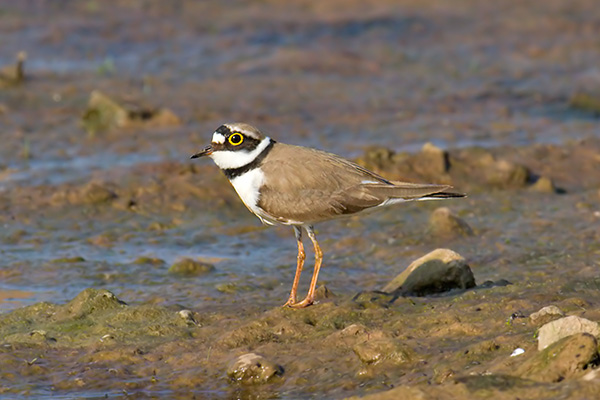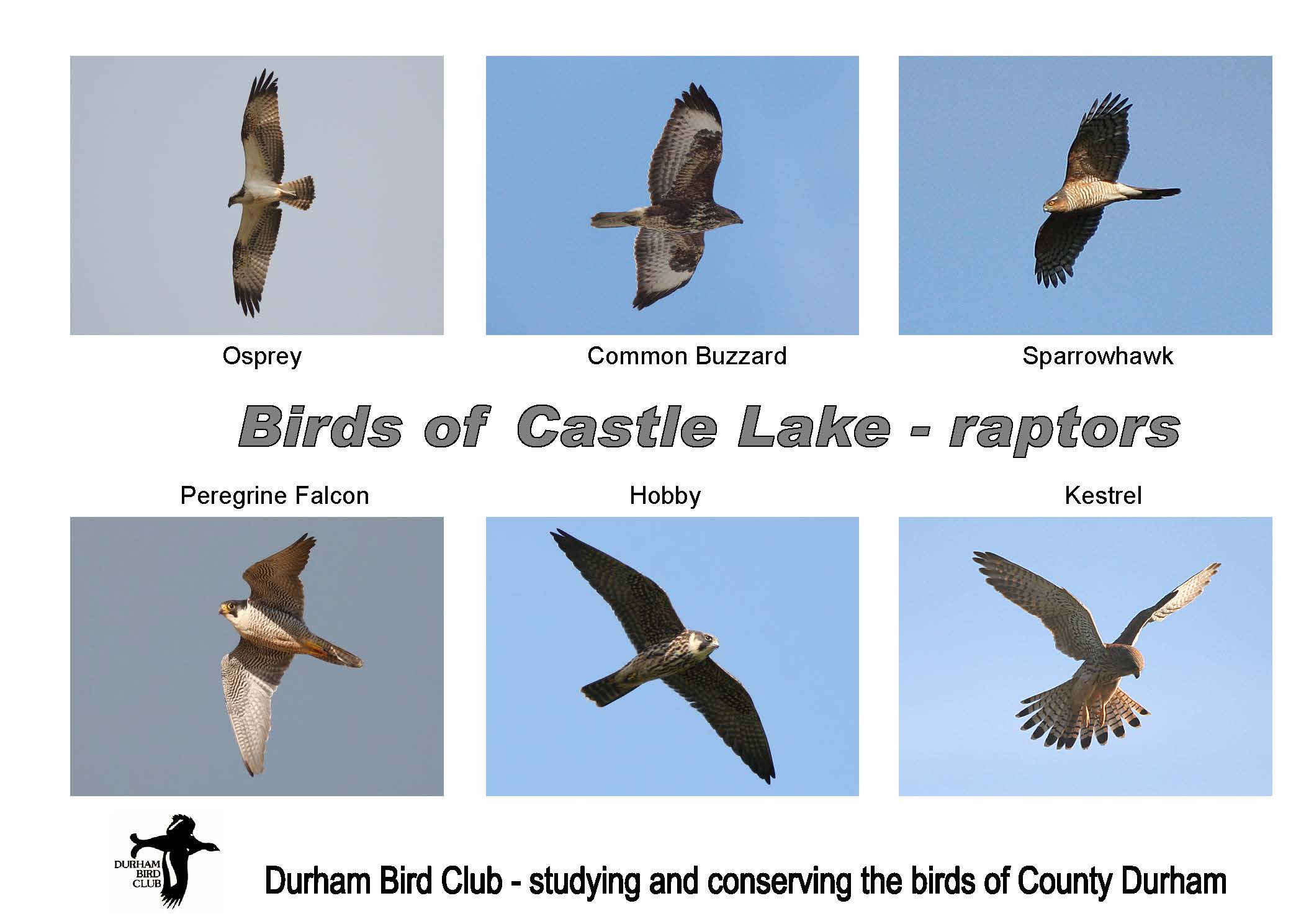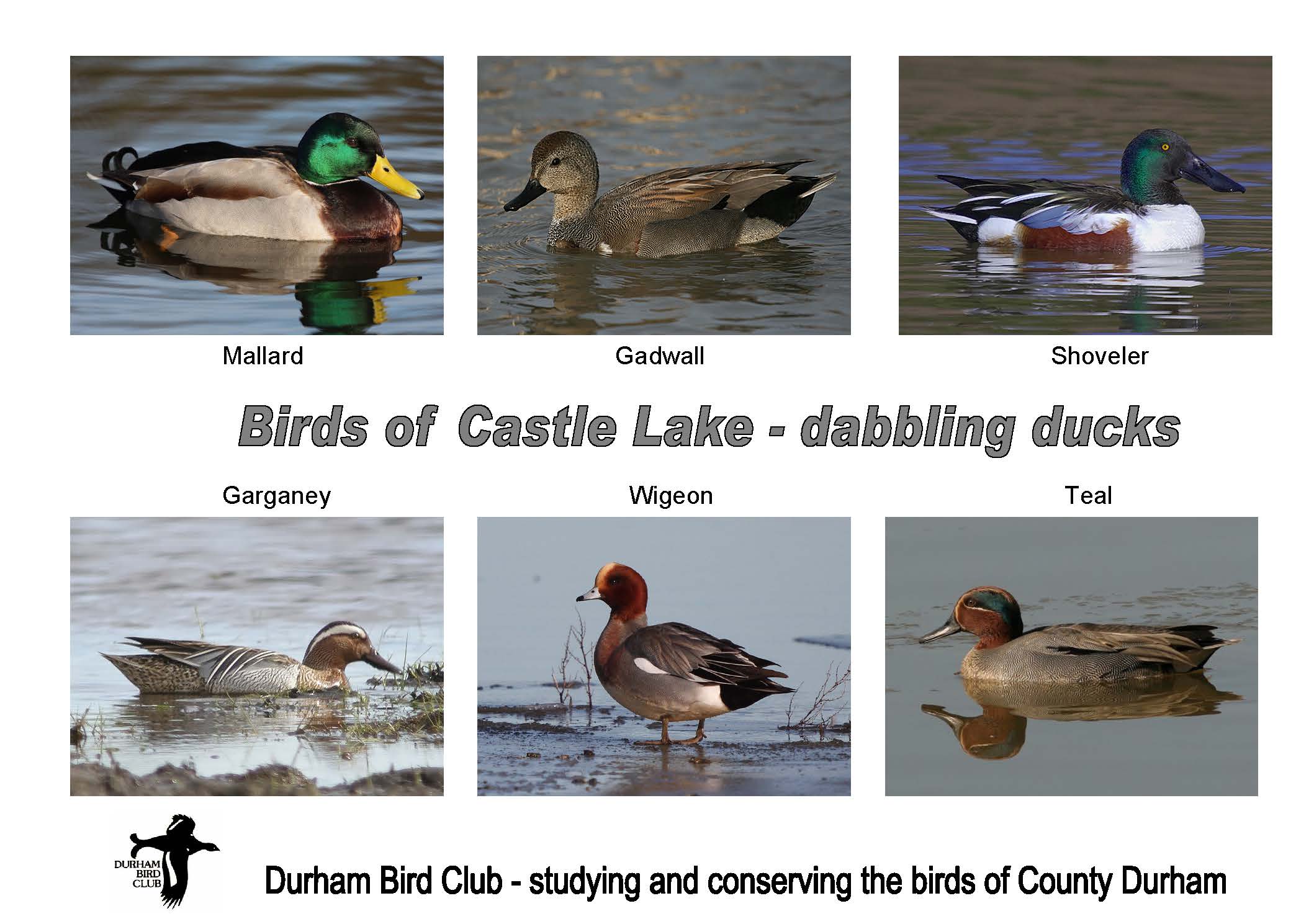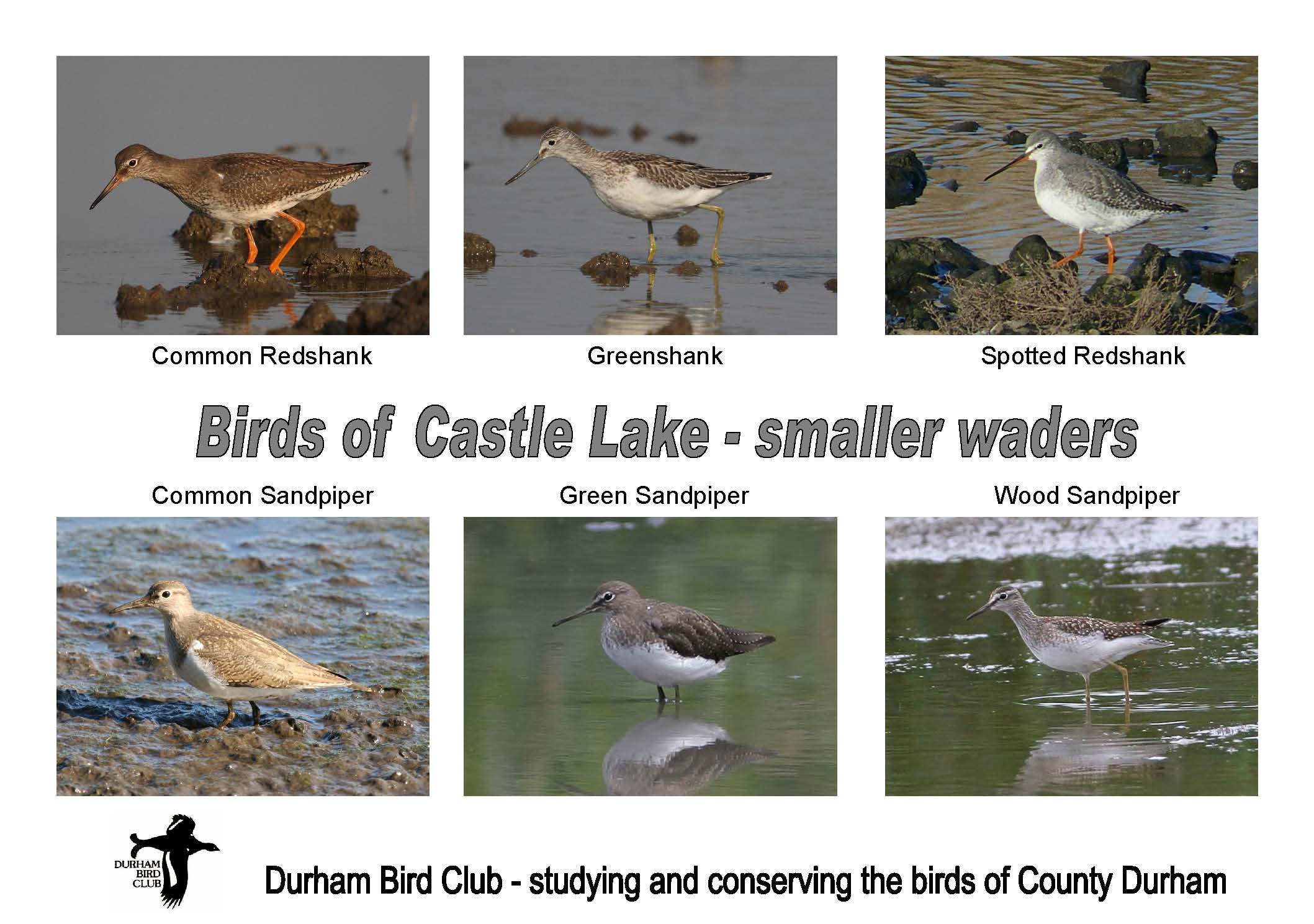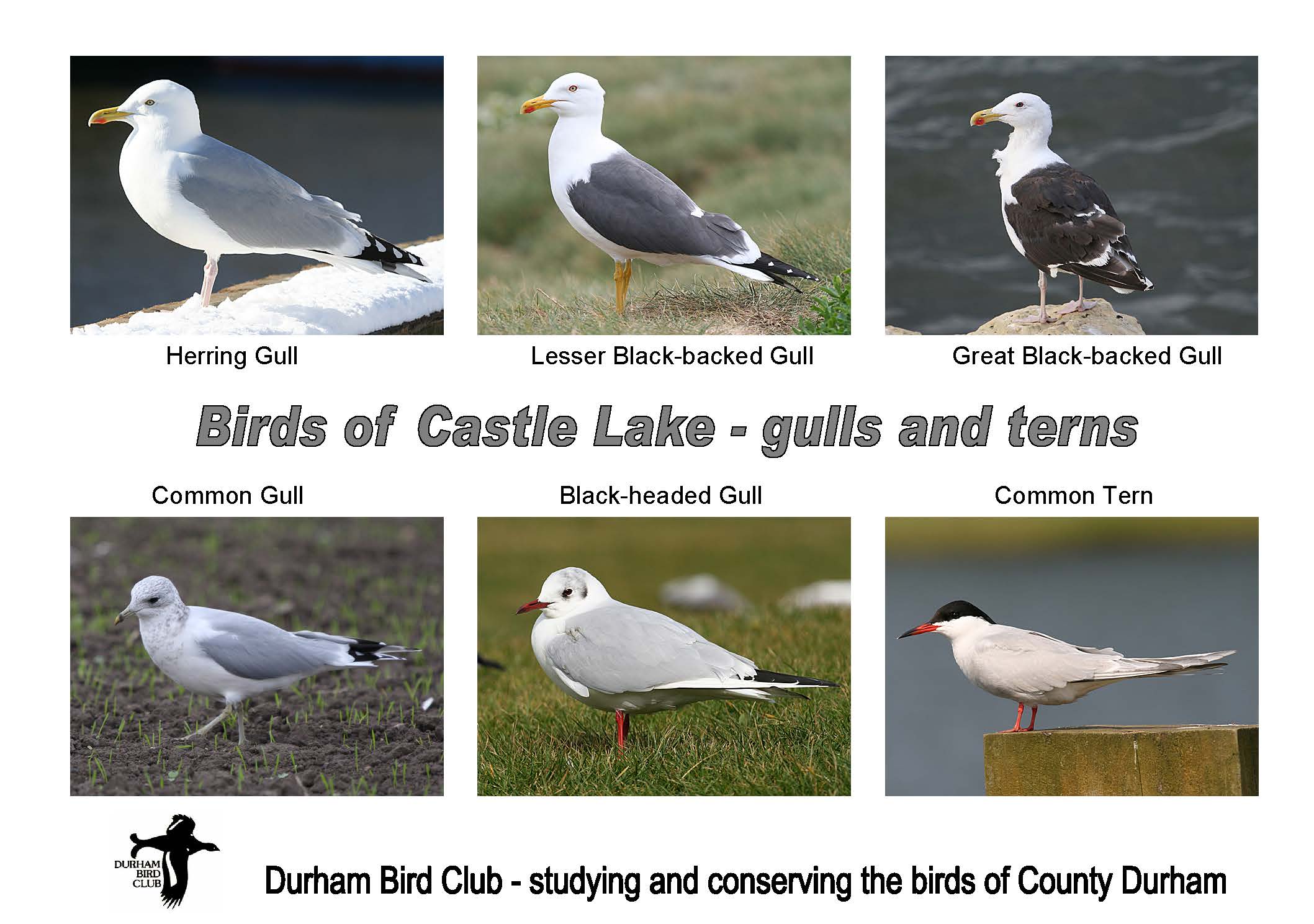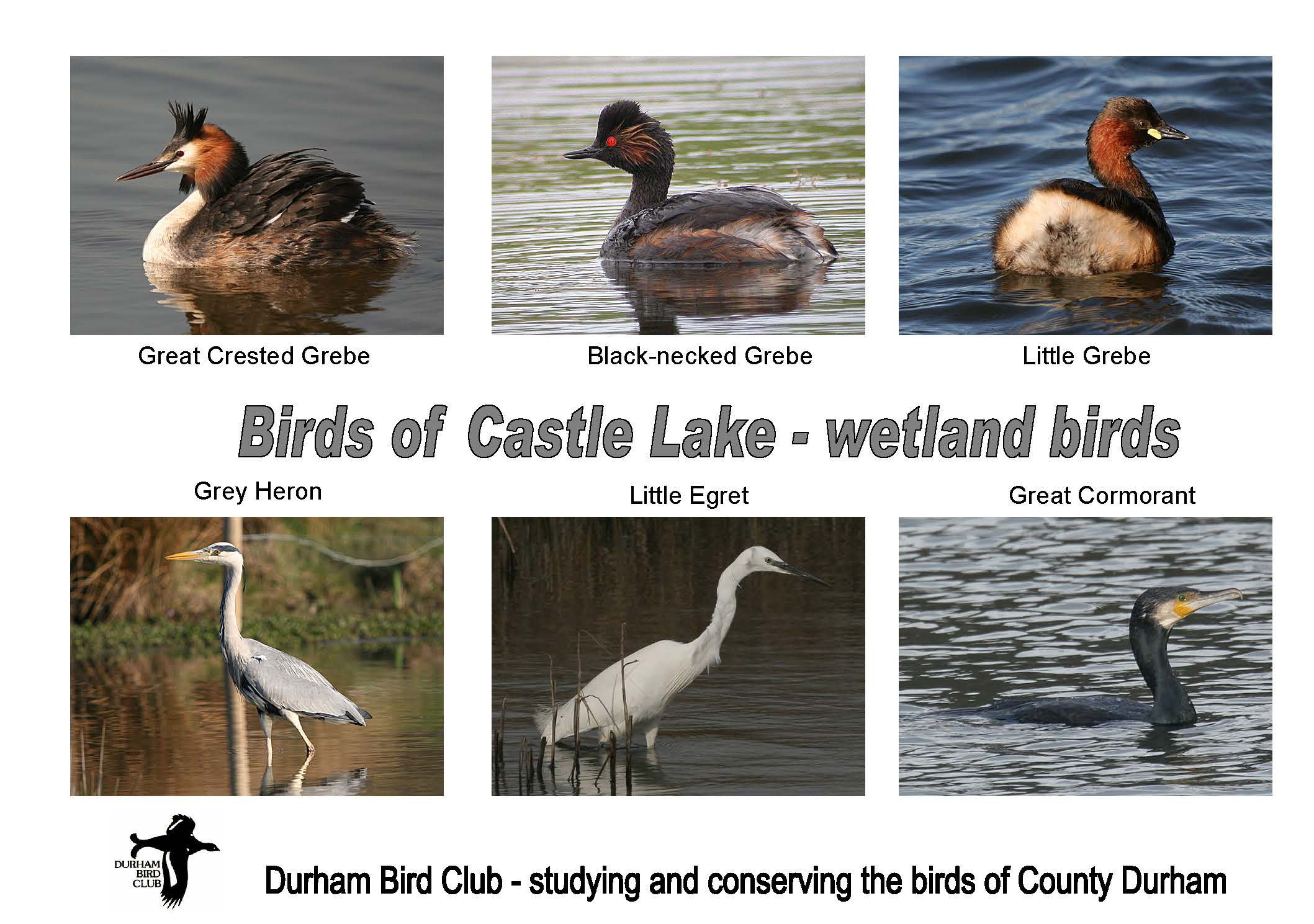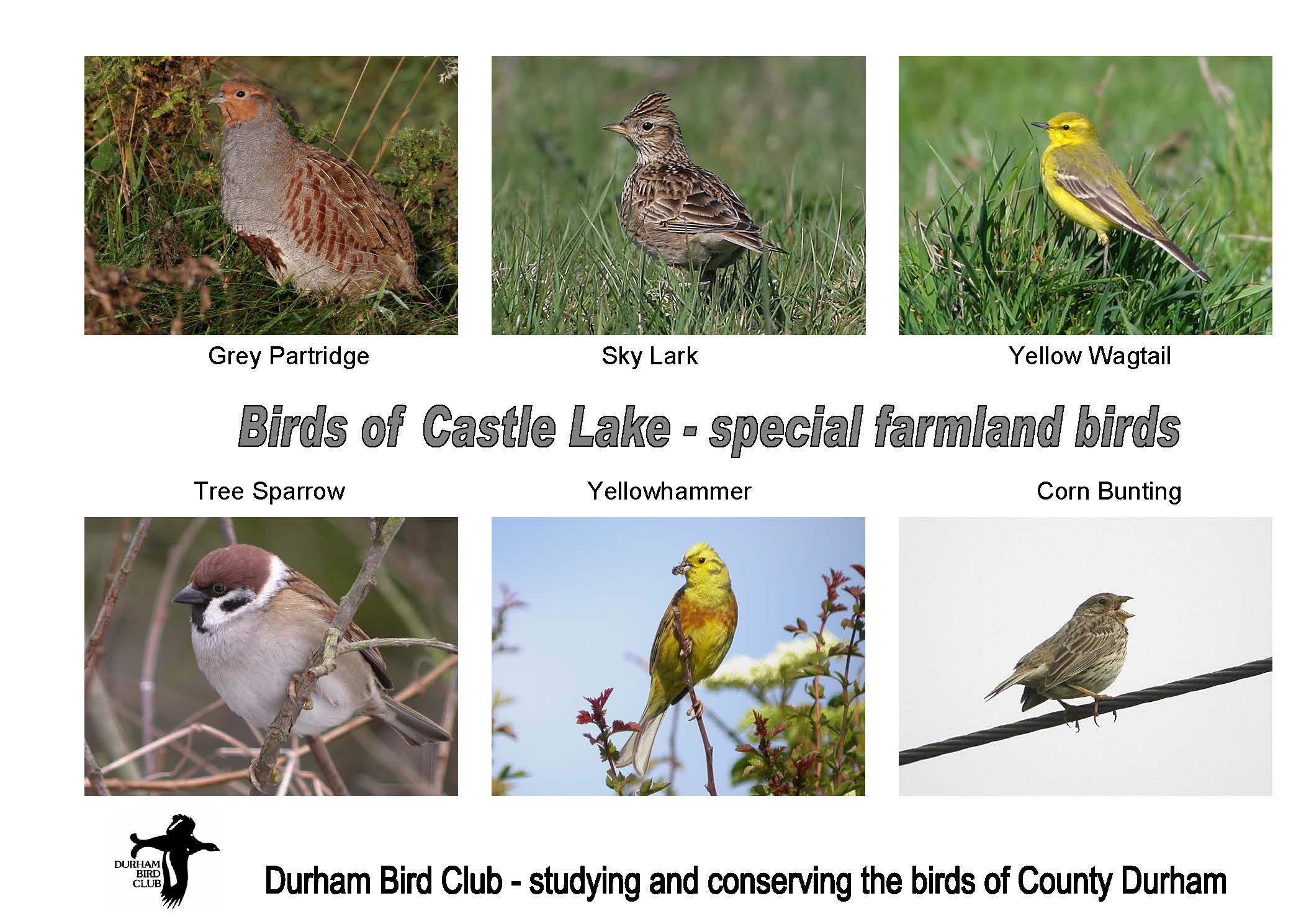An Ecological Assessment of
BIRD LIFE
It is for its birdlife that Castle Lake is quite rightly renowned.
A total of 183 bird species (not including those birds regarded as ‘escapes’, generally wildfowl) have been recorded at Castle Lake, with an exceptional 150 species recorded during in around the site in 2011. During summer and autumn, it is quite possible to see 60-70 species at the site and in its immediate locale and over the relative short lifespan of the site, 30 species of waders have been reported. Considerable and increasing numbers of birds, but especially waterfowl and waders have continued to be recorded over the past 20 years, especially during migration periods and the winter. Indeed, away from the Tees marshes, Castle Lake regularly records the highest counts of non-estuarine wildfowl and waders in the county.
Being generally sparsely vegetated and lacking dense widespread scrub and tree cover, numbers of breeding birds, given the size of the site, are quite low, but there are still notable species breeding at Castle Lake. Birds recorded include significant numbers of species that are considered to be ‘Birds of Conservation Concern’ (Eaton et al, 2015) and/or UK Biodiversity Action Plan Priority Species (JNCC/Defra, 2007) as well as several farmland species, whose national breeding populations have undergone steep declines. Additionally, there are also significant records of species ranked as Schedule One breeding bird species and given special protection during the breeding season (BTO: List of Protected Birds). Castle Lake is also highly regarded for its ability to attract regular scarce and rare bird species, which can draw large numbers of admiring observers.
Read all about it...
REPORTS
Bird Identifcation Guide
Eco Assessment Report
Flora/Fauna/Mammals
Habitat improvements carried out by Durham Bird Club have led to real increases in bird diversity and breeding populations; for example, the creation of a reed bed at the south end of the lake and the installation of tern rafts have attracted, respectively, breeding Reed Warbler and Common Tern.
It is important to stress that all management and habitat improvement work, although funded from external support, has been done with the informal agreement of landowner and Durham Bird Club.
Geographically, there is an important movement of birds on a flyway between the Bishop Middleham wetland system and the east coast, especially to and from RSPB Saltholme and other inland wetlands, such as Hurworth Burn Reservoir to the northeast. This movement is a daily occurrence, comprising of large flocks of gulls, wildfowl and waders.
Locally, there is obvious bird movement between Castle Lake and the other neighboring wetlands surrounding the village and the wider River Skerne watershed: for example, Ferryhill Carrs to the west and Hardwick Park to the south.
Those sites neighboring Castle Lake (Stoney Beck Lake, A1 Flashes and Fishburn Lake) are very important, if disturbance occurs, for feeding, roosting and bathing, interspecific and intraspecific interactions.
Additionally, the rich mosaic of non-wetland habitat surrounding the site (for example, scrub woodland, several disused railway lines that also offer ‘green corridors’, agricultural fields and the actual village of Bishop Middleham with its mosaic of gardens, parkland and built environ, including several farmsteads) supports a wide variety of breeding and passage passerine species subsequently recorded at Castle Lake such as Swallow, Willow Warbler, Common Whitethroat and Yellow Wagtail.

During particularly cold winters, the whole lake can freeze, but the area can still attract large concentrations of wildfowl and waders that utilise the lake and surrounding pasture during this period.
The livestock grazing regime that provides closely cropped grassland up to the water’s edge is especially important for wildfowl species as it provides not only unhindered sightlines for the birds to spot potential predators such as Fox, but also ideal grazing opportunities.
Wigeon especially take advantage of this grazing habitat, with up to 1,000 birds being counted in 2017. Other species of wildfowl found in significant numbers include Teal (300 in January 2015), Mallard, Gadwall (82 in February 2015) and Coot (280 in March 2015).
Smaller numbers of Goldeneye are present through the season, with occasional records of the scarce Scaup, Goosander and Smew. Whooper Swan and six species of geese can be seen during the winter months, with small numbers of the relatively scarce Bean Goose and White Front Goose recorded on an annual basis.
Significant numbers of waders also are also recorded during the coldest part of the year months. This includes Curlew (502 counted in February 2015), Lapwing with a maximum count of 2,500 in 2017 and Golden Plover with up to 900 present in February 2015 as birds probably moved through the area on their return to uplands breeding areas.
The site is equally important for passerine farmland species with flocks of circa 50 birds of Goldfinch, Pied Wagtail and Tree Sparrow throughout the winter months, with the hedgerows and pastures also attracting flocks of Fieldfare and Redwing, which can sometimes number hundreds.
Attracted by large numbers of potential prey, Sparrowhawk, Merlin and Peregrine are seen through the winter months, with Short Eared Owl also frequent, and Hen Harrier occasionally being observed (singles were noted in March and April 2014) and a Rough Legged Buzzard also recorded in October 2011. Upwards of 4-5 Common Buzzards are frequently seen above and around the site, with the later species being seen throughout the year and breeding locally.

After more settled numbers during winter, during spring, there is a very visible movement of birds through Castle Lak, as winter visitors depart and spring migrants arrive.
There is also a small migration northwards of waders, and most records of just 1-2 birds and include Green Sandpiper, Ruff, Black Tailed Godwit and Wood Sandpiper.
There is also a small spring migration of wildfowl through the site, with Wigeon and Teal lingering until May, until they move northwards to breed.
The wet grassland around the lake and surrounding arable areas is also especially attractive to Yellow Wagtail and an estimated 1-5 pairs of this very attractive bird breed at the site.
In addition, several nominate races of Yellow Wagtail, including ‘Channel’ Wagtail and ‘Blue Headed’ Wagtail are annually seen on spring passage and occasional scarce species such as Red Rumped Swallow, recorded in 2009, whilst in May 2011, Spoonbill, Temminck’s Stint and Quail were all recorded.
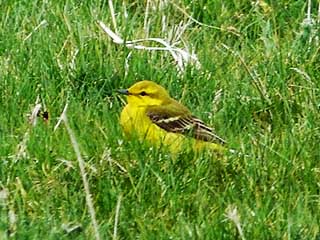
Number of birds during the summer months are generally at their lowest during the year as birds get on with arduous process of breeding and then immediately undertake a moult as old feathers are replaced.
Castle Lake and its surrounding pastures are important breeding areas for several scarce breeding species with locally significant populations of Durham Biodiversity Action Plan (DBAP) and Red and Amber Birds of Conservation Concern.
Breeding species include: Lapwing with up to 10 pairs in 2016, and 1-2 pairs Redshank. Schedule One species that currently breed on an annual basis include 1-2 pairs of Little Ringed Plover and Kingfisher.
Approximately 1,200 pairs of Little Ringed Plover breed in the UK (Hayhow et al, 2017), and this species is seen annually. Breeding has been recorded; a week-old chick noted in August 2016. Of more significance, in 2014, a pair of Black Necked Grebes also bred successfully, with two young birds fledged.
The current breeding population of Black Necked Grebes in Britain is estimated to be only 52 pairs.
Therefore, it is highly significant that the species has bred successfully at Castle Lake. The site offers ideal breeding habitat, as a shallow lowland water body with copious submerged plants.
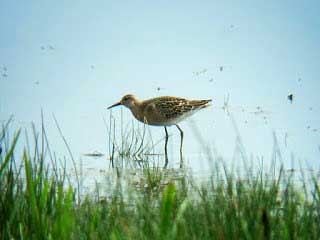
It is during autumn that the greatest concentrations of birds can be seen at Castle Lake. Important numbers of autumn passage of wildfowl and waders, including some very scarce species, are noted annually across the area, with the lake being an important feeding station for often many thousands of migrating birds at any one time.
Movements of waders and duck species include birds moving out of their Pennine breeding areas, for example, Golden Plover and Lapwing, counts of which regularly exceed 500 and 1,000 respectively throughout the autumn, and also birds from much further afield, such as those breeding in the high Arctic.
Most of these birds rely on wetlands to feed up for their journeys back to Africa and they can be very prominent during this period, and some counts, such as Curlew Sandpiper, can exceed those recorded on the much larger North Tees Marshes complex.
Wader species that are now annual visitors, some in quite significant numbers, include upwards of 10 Greenshank; generally 1-2 Spotted Redshank; up to 5 Little Stint; Dunlin, Black Tailed Godwit, Whimbrel; Curlew Sandpiper (11 counted in August 2016); Common Sandpiper; upwards of 10 Green Sandpiper; Wood Sandpiper and Ruff (51 recorded in August 2015).
Further emphasising Castle Lake’s attraction to migratory waders, rare species recorded during the autumn included scarce visitors from North America and Siberia such as Pectoral Sandpiper, which has been recorded on six occasions since 2000, and an adult female Wilson’s Phalarope that lingered for two days in August 2007.
Fantastic range of Bird life
A FEW FACTS
Recorded Species
Species recorded in 2011
Species seen in Summer/Autumn
Species of Wader
A special place to visit
RARE VISTORS
An impressive list of rarities such as Lesser Scaup, White Stork, Wilson’s Phalarope and Black Stork have been recorded, along with scarcities including Black-necked Grebe, Common Crane, White-winged Black Tern, Honey Buzzard, Pectoral Sandpiper, Temminck’s Stint, Firecrest and Red-rumped Swallow.
Help us!
We'd like you to...
Visit
Watch
Make Notes
Send Pictures
If you visit the site please record the species of birds you see along with any interesting flore or fauna. Please send the information info@castlelakecg.co.uk


